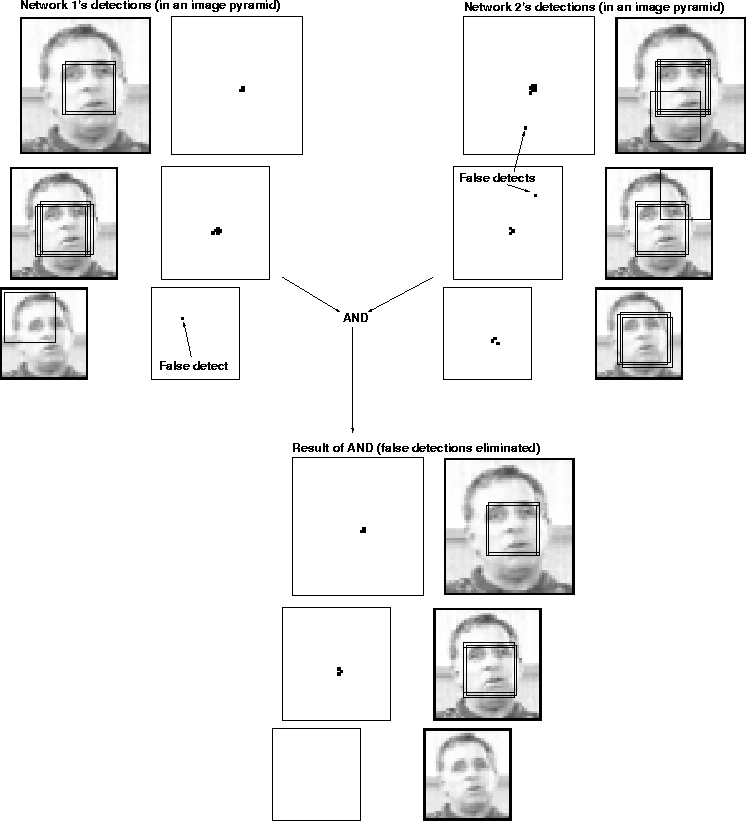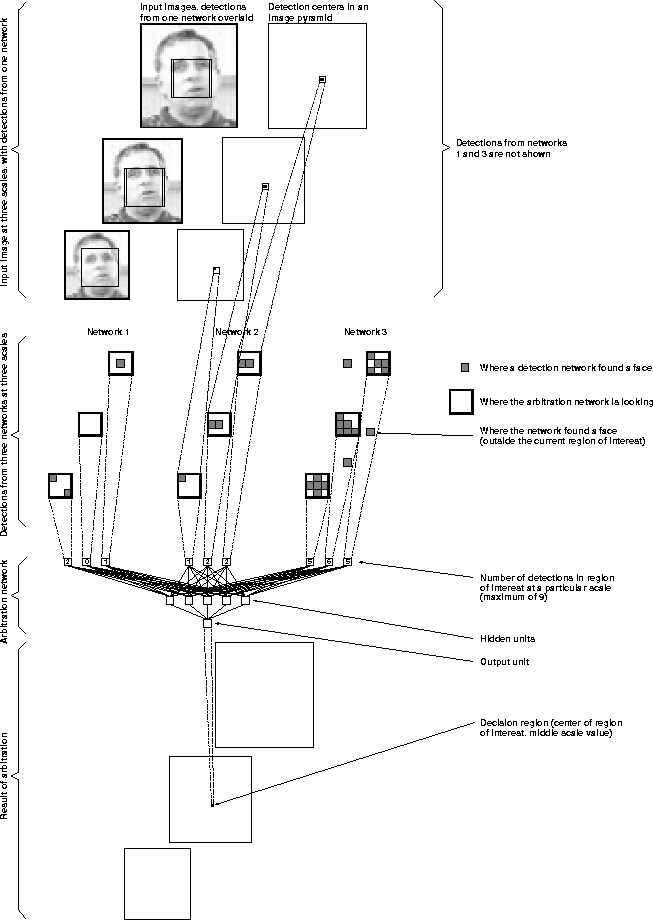
Figure 7: ANDing together the outputs from two networks over different positions and scales can improve detection accuracy.
To further reduce the number of false positives, we can apply multiple networks, and arbitrate between the outputs to produce the final decision. Each network is trained in a similar manner, but with random initial weights, random initial non-face images, and random permutations of the order of presentation of the scenery images. As will be seen in the next section, the detection and false positive rates of the individual networks will be quite close. However, because of different training conditions and because of self-selection of negative training examples, the networks will have different biases and will make different errors.
Each detection by a network at a particular position and scale is recorded in an image pyramid, as shown in Figure 7. One way to combine two such pyramids is by ANDing them. This strategy signals a detection only if both networks detect a face at precisely the same scale and position. Due to the biases of the individual networks, they will rarely agree on a false detection of a face. This allows ANDing to eliminate most false detections. Unfortunately, this heuristic can decrease the detection rate because a face detected by only one network will be thrown out. However, we will show later that individual networks can all detect roughly the same set of faces, so that the number of faces lost due to ANDing is small.
Similar heuristics, such as ORing the outputs of two networks, or voting among three networks, were also tried. Eac of these arbitration methods can be applied before or after the ``thresholding'' and ``overlap elimination'' heuristics. If applied afterwards, we combine the centroid locations rather than actual detection locations, and require them to be within some neighborhood of one another rather than precisely aligned.

Figure 7:
ANDing together the outputs from two networks over different positions
and scales can improve detection accuracy.
Arbitration strategies such as ANDing, ORing, or voting seem intuitively reasonable, but perhaps there are some less obvious heuristics that could perform better. To test this hypothesis, we applied a separate neural network to arbitrate among multiple detection networks. For a given position in the detection pyramid, the arbitration network examines a small neighborhood surrounding that location in the output of each individual network. For each network, we count the number of detections in a 3x3 pixel region at each of three scales around the location of interest, resulting in three numbers for each detector, which are fed to the arbitration network, as shown in Figure 8. The arbitration network is trained to produce a positive output for a given set of inputs only if that location contains a face, and to produce a negative output for locations without a face. As will be seen in the next section, using an arbitration network in this fashion produced results comparable to (and in some cases, slightly better than) those produced by the heuristics presented earlier.

Figure 8:
The inputs and architecture of the arbitration network to arbitrate
among multiple face detection networks.